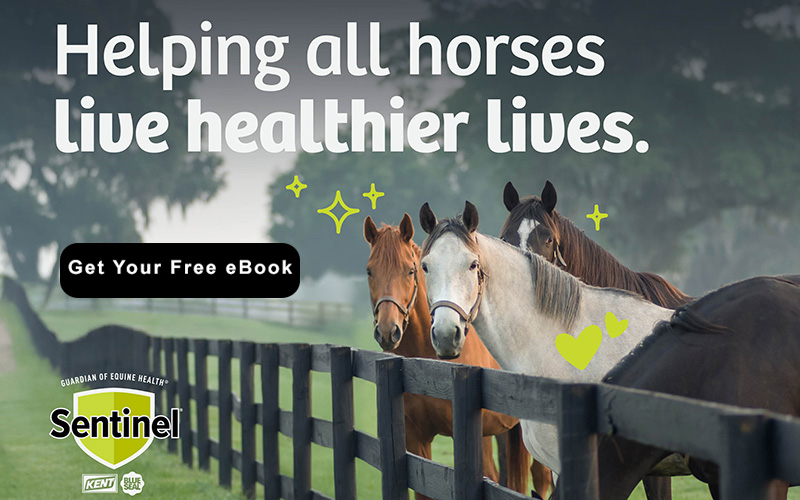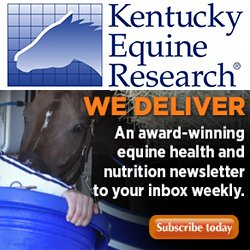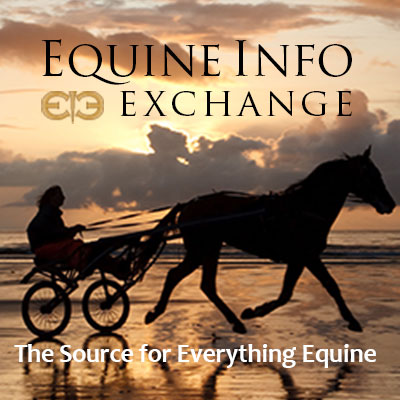Health & Education
We all want the best care possible for our horses. The Heath & Education section covers both Learning Institutions, Organizations as well as many sources for equine assistance including Veterinarians and Farriers.
For those who want a to formally study horses, the Education section includes College Riding, Equine Studies, and Veterinary Schools. Learn about the wide variety of horses in the Horse Breeds section. Supplements and Treatments Therapy are also included in the section.
Everyone can learn from Fine Art and there are some specialty Museums that might surprise you.
Horses as a therapy partner enrich the lives of the disabled. These facilities are listed in our Therapeutic Riding section. To help children and young adults build confidence and grow emotionally, please see the resources available on the Youth Outreach page.
Looking for a place to keep your horse? You can find it in the Horse Boarding section. Traveling? Find a Shipping company or Horse Sitting service if your horse is staying home!
Want to stay up to date with the latest training clinics or professional conferences? Take a look at our Calendar of Events for Health & Education for the dates and locations of upcoming events.
Do we need to add more? Please use the useful feedback link and let us know!
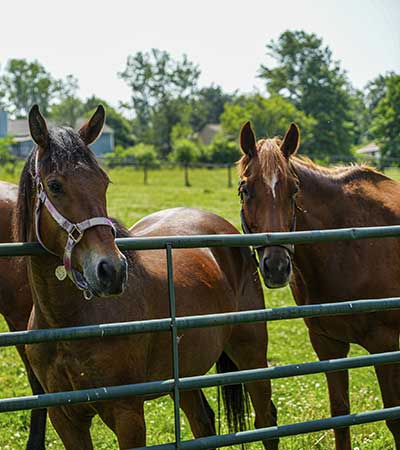
Horse Miscarriages Offer Clues to Causes of Early Human Pregnancy Loss - Cornell Veterinary Medicine
A study of horses – which share many important similarities with humans in their chromosomes and pregnancies – revealed that 42% of miscarriages and spontaneous abortions in the first two months of pregnancy were due to complications from an extra set of chromosomes, a condition called triploidy.
“Over that embryonic period [up to eight weeks from conception], triploidy had rarely been reported in mammals outside of women,” said Mandi de Mestre, the Dorothy Havemeyer McConville Professor of Equine Medicine at Baker Institute for Animal Health and in the Department of Biomedical Sciences at the College of Veterinary Medicine. “The study tells us that over the first six weeks of gestation, this will likely be the primary cause of pregnancy loss following natural conception.”

De Mestre is the corresponding author of Naturally Occurring Horse Model of Miscarriage Reveals Temporal Relationship Between Chromosomal Aberration Type and Point of Lethality published August 5, 2024 in the Proceedings of the National Academy of Sciences.
Human miscarriages occur in 10-20% of pregnancies and are commonly associated with chromosomal errors, but there have been no suitable animal models that truly duplicate the features of the condition. The new research findings will help veterinarians better understand the causes of pregnancy loss in horses, and identifies horses as an excellent model for studying human miscarriage.
“We were able to study the impact of chromosome errors across the entire pregnancy in the horse,” de Mestre said. “We found that triploidy is only associated with losses in early pregnancy.”
In the study, de Mestre’s laboratory at Cornell, and earlier at The Royal Veterinary College, London, received 256 fetus and placenta samples from veterinarians who treated horses with failed pregnancies over a period of 10 years. Using the samples, the researchers were able to investigate the prevalence of different types of chromosomal copy number errors associated with pregnancy loss.
They found that chromosomal errors occurred in 57.9% of pregnancy losses up to day 55 of gestation, in 57.2% of losses between days 56 and 110 and in only 1.4% of losses between days 111 and the end of pregnancy.
Aneuploidy (loss or gain of a single whole chromosome) was mainly associated with miscarriages in the first 10 weeks of pregnancy, while deletions or duplications of only part of a chromosome were found in miscarriages after 110 days. These findings turned out to be remarkably similar to those observed in a number of large studies in women, according to the paper.
Horses are a good model for studying human pregnancies because they have a similar gestation period – 11 months compared to nine months in women – and the embryo develops at a similar rate in the early stages. In addition, horse chromosomes have a very similar genetic content to human chromosomes, which makes them particularly relevant for the study of chromosome errors.
Reasons for miscarriage in women in very early pregnancy have been difficult to determine because most fetuses during this period are lost at home, leaving scientists without material – and data – to study. The study’s findings provide insight into the frequency of chromosome errors over the equivalent period of the first six weeks of human gestation.
Because of the value of horses and the emotional attachment their owners have to them, horses receive a high level of care, with routine tracking of pregnancies, which then provide extensive data for research.
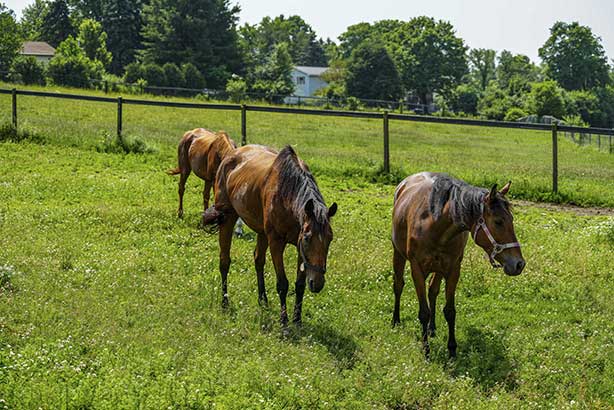
Photo courtesy of John Enright, Cornell College of Veterinary Medicine.
Other animal models, such as mice, are not comparable to human pregnancies. Mice have a gestation period of about three weeks, and natural pregnancy losses in mice are low.
In terms of equine health, the study provides new details about common chromosomal abnormalities that will likely change the clinical management of pregnancies.
For example, if a clinician determines that a horse has a major chromosomal error, they may no longer choose to extend that pregnancy by administering hormones, a common practice in pregnant mares. The study will also point researchers toward the development of new diagnostic tests for chromosome abnormalities in horse fetuses and investigating molecular mechanisms that lead to these abnormalities.
“This research has provided a foundation for understanding the genetic causes of pregnancy loss in horses, often referred to as pregnancy loss of unknown cause,” said Shebl Salem, a postdoctoral researcher in de Mestre’s Equine Pregnancy Lab and a co-first author of the study.
Other co-first authors include Jessica Lawson of the Royal Veterinary College in London, United Kingdom; and Donald Miller, de Mestre lab manager.
The study was partly funded by the Horserace Betting Levy Board and Thoroughbred Breeders Association.
This article originally appeared on the Cornell University "Cornell Chronicle" and is published here with permission.
The are more informative educational articles in our section on Health & Education.

A horse can be a great companion. The nature of the association may stem from companionship, riding pleasure, or competing in contests. Assuring the health of your horse requires a dedicated journey of care and attention to detail. This includes giving them the right diet, getting regular check-ups and ensuring they have a suitable living environment and regular exercise schedule. Here is an ultimate guide for keeping your horse healthy.
1. Well-Balanced Diet
A well-balanced diet is key to health, regardless of your horse’s age, breed, and activity level. Having experienced different life stages during their lifetime, and some working harder physically than others, horses are subjected to various requirements.
- Young and growing horses need diets rich in protein and calcium for correct development.
- Older horses may need easily digestible feeds with supplements added to the diet to help maintain health.
- Performance horses need higher energy intake than those used for leisure.
Essential nutrients would include carbohydrates for energy, proteins for the development of muscles, and fats for supplying energy and maintaining good coat condition, with the addition of vitamins and minerals to maintain general health.
Supplementary feeds like salt blocks can complement the required electrolytes. Feeding schedules should stay as close as possible to a horse’s natural grazing habits by providing forage continually throughout the day while sectioning out grains and concentrates to avoid digestive complications and obesity. In some cases, a horse energy supplement may be beneficial for maintaining stamina during training or competition.
2. Hydration
Adequate water intake is essential for overall health, digestion, thermoregulation, and cellular functions in your horse. Access to fresh, clean water should always be available for horses. Horses consume five to 15 gallons of water within a 24-hour period, though this may increase in hot weather or after long rides.
Some signs of dehydration to look for in a horse include reduced skin elasticity, dry mucous membranes, and sunken eyes. It is also crucial not to over-hydrate, since this may cause an electrolyte imbalance. Keep replenishing your water source; heating may be recommendable during the cold months.
3. Veterinary Care and Routine Check-Ups
Regular check-ups allow problems to be identified at the initial stage and solved before it’s too late. Common problems among equines include colic, lameness, or breathing difficulties, which can be sorted out with a regular check by a veterinarian.
Preventative care is the key to good health. Vaccinations will prevent influenza, tetanus, and West Nile virus. Make sure to practice good dental care with regular check-ups and floating (filing teeth) to prevent dental problems that impact feeding and nutrition. Also schedule deworming to give no room for internal parasites to manifest.
4. Exercise and Physical Fitness
A well-rounded exercise program will be important to your horse’s physical and mental health. An appropriate amount of exercise means one that agrees with the size, breed, or age of your horse and their present level of fitness.
Regular sessions help maintain muscle and cardiovascular fitness and joint flexibility, adding to overall fitness. Other exercise benefits for horses include maintaining a healthy weight, improving digestion, and enhancing immune function. Additionally, regular activity strengthens the bond between horse and owner, fostering trust and cooperation. Whether riding, lunging, or turning out in a paddock, consistent physical activity leads to a fit and happy horse.
5. Proper Grooming and Hygiene
Daily grooming practices are necessary for a clean and healthy horse. Good grooming can eliminate dirt, debris, materials, and loose hair. Ensure that you inspect your horse daily for any injuries or skin conditions. Brushing, combing, and hoof picking complement each other as essential tools for grooming. Regular sessions also help bind you to your horse more effectively.
Attention should also be given to a clean and safe living environment. Stables should be dry, spacious, and free of hazards. To stop hazardous bacteria and parasites from growing, clean stables and equipment on a regular basis. A clean atmosphere improves your horse’s overall health by lowering the possibility of respiratory problems or other health problems.
6. Mental and Emotional Welfare
Horses are social animals that want to interact and stimulate their interests. For mental and emotional needs, ensure that your horse has some aspect of social interaction with other horses. Some enrichment activities include providing toys and creating stimulating environments to keep your horse engaged and mentally active.
It’s important to be able to recognize the signs of stress or behavioral problems. Any change in behavior or appetite could indicate that something is wrong. A calm and content horse can be maintained through consistent positive reinforcement, or with the help of an equine behaviorist.
Endnote
Following the best practices mentioned above is the best way to ensure your horse leads a healthy life. Consider what it eats and drinks, along with providing it with regular exercise and maintaining good hygiene. You also need to also prioritize veterinary services to keep their health in check.
You can find more informative articles in our section on Health & Education.
Problems involving the upper airway are a common cause of decreased athletic performance. The treadmill allows the clinician to examine the upper airway of an equine athlete while it is exercising at high speed. This type of dynamic evaluation is very useful in determining if the horse has an upper airway abnormality affecting performance. There are certain abnormalities of the upper airway that only become evident during exercise and will not be seen during a resting endoscopic evaluation. The examination is tailored to the type of work and the level of fitness for each horse, mimicking the speed and distance that the horse typically works. The endoscopic examination is recorded and evaluated in slow motion so that subtle abnormalities are identified.
Read more: Performing Treadmill Endoscopy at Rood & Riddle Equine Hospital (1:59)
In this StallSide episode, Dr. Emma Adam and Krista Lea from the University of Kentucky join cohosts Dr. Bart Barber and Dr. Peter Morresey for a conversation on the complexities of tall fescue and the implications of endophyte ingestion. The conversation opens with Dr. Adam and Lea sharing their expertise on the characteristics of tall fescue grass and the symbiotic relationship it forms with the endophyte fungus. Throughout the episode, the cohosts and guests offer a balanced blend of scientific knowledge and practical advice, exploring the effects on equine health and addressing the significance of proper pasture management techniques.
Read more: Rood & Riddle Stallside Podcast - Tall Fescue Woes: Insights on Endophyte Ingestion
In this 69th episode of StallSide, we welcome international guest Dr. Jenny Hagen, from the University of Leipzig in Germany. Dr. Hagen shares her expertise in equine biomechanics and farriery and offers an in-depth look into her innovative approach to diagnosing and treating lameness. Learn about the complexities of equine movement, the latest advancements in biomechanics, practical farriery tips, and how a thorough understanding of these fields can revolutionize lameness treatment and improve your horse's performance and well-being. Tune in for an engaging conversation that bridges cutting-edge science and everyday equine care.
"Regenerative Medicine Therapies in Horses," presented by Dr. Aimee Colbath, assistant professor in the Section of Large Animal Surgery at #CornellVet, recorded December 19, 2023 via Zoom.
⚠️ Please note: This presentation includes photos of healing injuries and wounds. Please view at your own discretion.
Dr. Aimee Colbath's talk focuses on regenerative medicine treatments available to equine owners including stem cells, platelet rich plasma, autologous conditioned serum (IRAP) and autologous protein solution (ProStride).
Colbath received her VMD from the University of Pennsylvania. Following graduation, she completed a large animal internship at the University of Georgia followed by an equine surgical internship at the Tufts Cummings School of Veterinary Medicine. From 2012-2015, Colbath completed an equine surgical residency at Colorado State University. In 2022, she started a position in Large Animal Orthopedic Surgery at Cornell University.
Clinically, Colbath has a passion for musculoskeletal disease and orthopedic surgery including arthroscopy, fracture repair and lameness with a special interest in regenerative medicine and whole horse rehabilitation techniques (including acupuncture, kinesiotape and physiotherapy). Her laboratory focuses on musculoskeletal disease interventions with a special interest in immunotherapeutic treatments and regenerative medicine techniques.
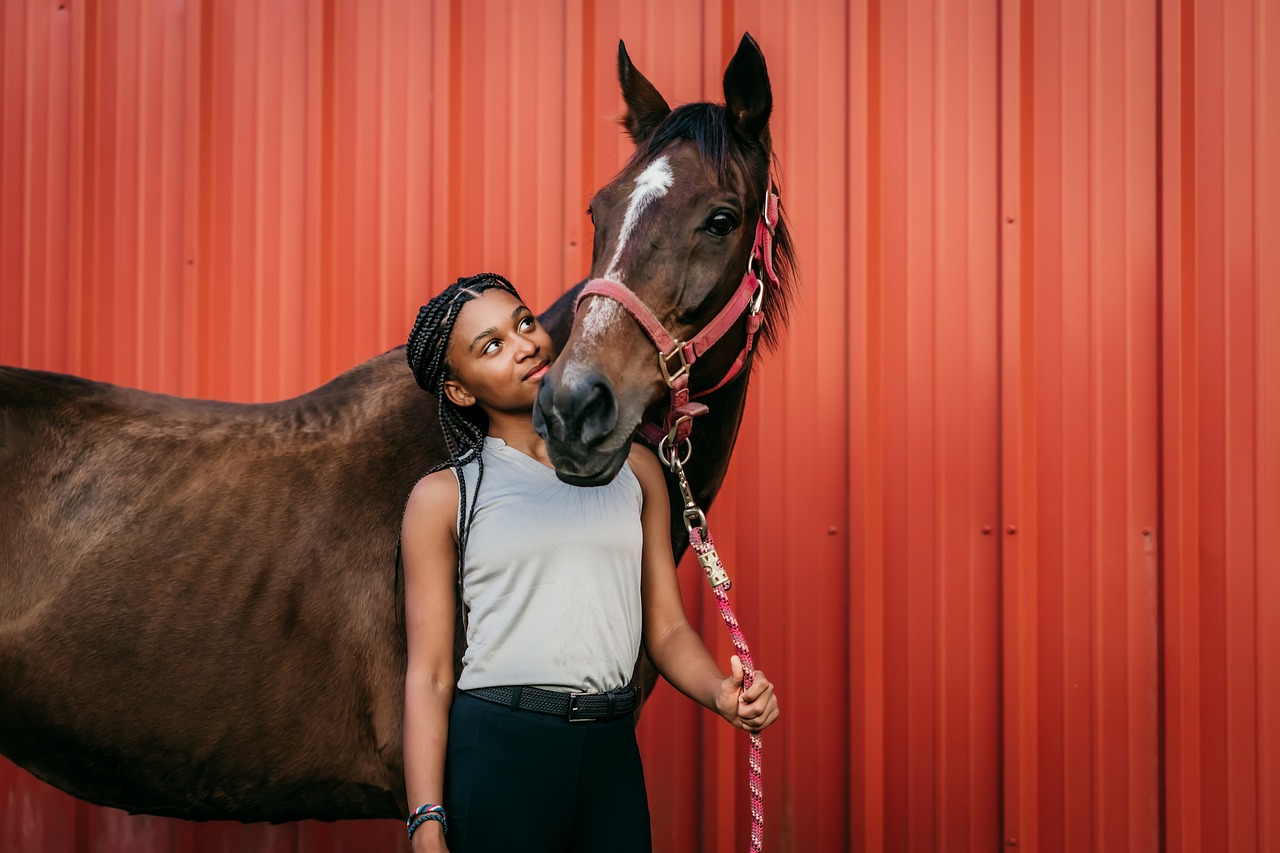
Horse facilities can provide more than just dung and hoof prints. Equine-assisted programs offer unique educational benefits that could enhance students’ experiences and improve their lives. Are you wondering about the specifics? Take a look.
1. Building Confidence
Working with horses gives students more confidence and raises their self-esteem, as learning to groom and ride such proud, noble creatures promotes a sense of achievement.
2. Improving Communication Skills
Horses are observant beings who react to non-verbal communication elements by observing one’s body language. Dealing with them helps students understand the value of expressing one’s feelings. Besides, students must work together, communicating with the horse and each other to achieve mutual goals. Such activities help enhance their social skills and foster relationships with their peers.
3. Developing Empathy
By caring for horses, students learn sensitivity and gentleness. It fosters a unique environment where emotional and social skills can flourish.
4. Stress Reduction and Emotional Regulation
Spending time with horses helps reduce stress levels. It also facilitates emotional regulation, assisting students to manage anxiety and improve their mood.
5. Encouraging Physical Activity
Horse riding is a vital part of teaching and training horses. It involves such physical activities as grooming, saddling up, and riding, which promote an active lifestyle and urge students to remain fit.
6. Boosting Cognitive Abilities
Mental stimulation sharpens our skills. What do you do when you can’t solve an academic problem? You contact the best essay service, Top Essay Writing, and ask them for help. You gain new insights once you see their work, stimulating your knowledge and critical thinking. The situation with horses is rooted in the same principles. Cognitive abilities are developed when equestrian practitioners learn to identify and remove obstacles, such as figuring out how to jump a fence and providing commands to their horses. It involves thinking critically, locating solutions, and analyzing situations.
7. Supporting Special Needs Education
Of course, equine-assisted learning can help any student, but those with special needs can benefit from the controlled environment the horses provide. When horses are understood and treated with respect, they become focused and obedient. Spending time with them can help improve students with special requirements' focus, motor, and sensory skills.
8. Teaching Responsibility and Commitment
You can’t just forget about a horse. It is what students should do daily:
- Feed a Horse: Students must give it food every day.
- Give Fresh Water: Horses love drinking, so a fresh supply must be present all the time.
- Make Sure It’s Properly Cared for: Students must watch out for their horse’s health.
- Be Attuned to Its Needs: You’ll learn how to speak with your horse and monitor its needs and wants. Fulfill them, and you’ll have a friend for life.
A sense of responsibility connects the dots for many students, so they understand that they can’t just show up to use horses for practice and do nothing in return. The sense of consistency, responsibility, and reliability is what they will take into the other parts of their lives.
9. Fostering Environmental Awareness
By learning about horses and how to care for them, students are introduced to sustainability practices related to animal welfare and the conservation of the environment. They learn to value nature and discover how to preserve it.
10. Inspiring Career Exploration
Inspiration comes in the most unexpected shapes. Seeing the base of sample essays on different topics can help you understand your subject better, allowing you to discover something new about it. Similarly, by spending time with horses, students might decide to study veterinary sciences, animal behavior, or agriculture. Equine-assisted programs can help inform your future career.
11. Artistic Expression
Plenty of art activities, such as drawing and painting, can be centered on horses. Students can express themselves visually after spending a day with their creature.
Galloping Towards Growth
Equine-assisted learning programs are a valuable part of learning environments. Their possibilities can affect students’ confidence, communication skills, and empathy. When schools open their doors to horses, it signals that school leaders are ready to nurture the development of their students in ways that go beyond standard academic curricula.There are more informative articles in our section on Health & Education.
"Why is the Mule the Most Important Member of the Horse Family?" presented by Dr. Doug Antczak, recorded Feb. 21, 2023 via Zoom.
The Mule is a hybrid animal produced by a mating between two separate species, the horse and donkey. Mules have a long history of contributions to human society as a remarkable beast of burden and source of animal power. Less well known are the many ways in which the study of mules has advanced scientific thought and our understanding of fundamental biological principles. This seminar will introduce you to the wonderful and fascinating world of mules.
Doug Antczak, VMD, PhD, is the Dorothy Havemeyer McConville Professor of Equine Medicine at the Baker Institute for Animal Health. Antczak graduated from Cornell University with a BA in biology in 1969, before receiving his VMD from University of Pennsylvania in 1973. He then completed a PhD in immunology at the University of Cambridge in 1978. At Cornell, Doug Antczak’s research program is focused on the health of horses, a passion of his from an early age. Through the Baker Institute’s Equine Genetics Center, the Antczak laboratory group has a long history of advancing basic knowledge and applying that knowledge in equine genetics, immunology and reproduction. Among other important projects, Dr. Antczak’s genetic selection and breeding of horses led to his continuing involvement in the international Horse Genome Project.
Read more: Why is the Mule the Most Important Member of the Horse Family? Cornell Equine Seminar
"Five tips for keeping your horse sound," presented by Michelle Delco '98, D.V.M. '02, Ph.D. '16, assistant research professor at the Cornell College of Veterinary Medicine, as part of the Cornell Equine Seminar Series.
Cornell's Equine Hospital, the New York State 4-H Horse Program and Cornell Cooperative Extension are proud to host the Equine Seminar Series. In this series, equine experts present on important equine health and management topics. The seminars are free to attend and open to the public. We hope you will join us and other equine enthusiasts for this exciting virtual learning opportunity!
Read more: Five Tips for Keeping Your Horse Sound - Cornell Vet Equine Seminar Series
- Deworming the horse using a paste syringe with Teresa Kackert
- Stable Vices: Theirs or Ours? Abnormal Behavior in Horses
- FAQ: Lameness and Arthritis in Horses
- How to Safely Pony a Horse with Teresa Kackart (6:55) - Certified Horsemanship Association
- Equine Emergencies 101: What To Do When the Worst Happens from Cornell Equine Seminar
- Pre-purchase Headaches in the Sport Horse
- Sources of Magnesium - Including Whole Foods
- The Grayson-Jockey Club Research Foundation: Improving the Ability to Diagnose Spinal Cord Diseases
- Leadership Isn’t as Simple as it Sounds - an Excerpt from "How Two Minds Meet"
- CBD and other Cannabinoids – How they can benefit you, your horses, and your pets
- Foal Handling with Monty Roberts (2:00)
- Rood & Riddle Stallside Podcast: Sport Horse Medicine & Innovative Therapies with Dr Daniel Devis
- Melatonin: Can It Predict Your Horse’s Temperament?
- Summer Safety: Barn Fans & Automatic Horse Waterers
- Upper Airway Obstruction in Barrel Racing Horses
- Start Horseback Riding off on the Right Hoof
- Highlining with Fred Bruce and Stan Loewen
- Double Lunging the Horse with Mitzi Summers (10:53)
- Music Helps Horses Better Respond to Performance Demands
- What to Expect When Sedating a Horse






